Tiling a swimming pool
It is common that tiles are used in the installation of bathrooms above baths and in showers which are called wet areas but a swimming pool is the ultimate wet area as the tiles will be submerged in water for long periods of time. It is important to get the job done correctly as future repairs are hard to do and can be costly to drain the pool and allow damaged surfaces to dry out.
When grouting the joints in a pool with a cement based grout which it is still hard to make a seal due to the cement being porous, even if an epoxy resin grout is used to fill the joint it cannot be guaranteed that the adhesive or substrate will be kept free from water if the epoxy did not perfectly fill the joint on installation.
Adhesives
Tile adhesives in the use of swimming pools must be such that water does not  effect the properties of the adhesive if the adhesive comes in contact with the  water. Cement adhesives must be used in this case
Waterproof Layer
The construction of the pool must have a waterproof shell or some kind of tanking system behind the tiles, just in case water seeps through the tile or joints.
Movements
There can be problems with movement due to the pool being tiled when empty, once tiling work is complete the pool will then be filled adding weight and pressures, even a change in the temperature of when the water goes in can cause cracks to the substrates.
Chemical Reactions
It is important to check the grout that you use as this can react with the chemicals such as chlorine, which will be added to the water, this could result in a colour change of the grout or a degrading of the grout.
Once the appropriate steps have been done above then tiling a swimming pool is just like tiling any wall or floor. If the swimming pool has a lot of contours then mosaic tile is best used as this kind of tile can follow the natural flow of the contour.
Tiling Courses
UK Pro Tiling Training offer fast track professional tiling courses which cover all the practical aspects of how to tile along with the background preparation information. For more details of our courses please visit www.tiling-courses.co.uk
all the practical aspects of how to tile along with the background preparation information. For more details of our courses please visit www.tiling-courses.co.uk
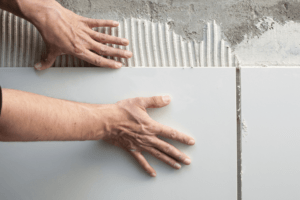

 when tiling direct onto neat plaster. Gypsum plaster based products and cement products do not get on with each other and can cause de-bonding, this is due to the chemical reaction that goes on when the two come together. This reaction forms a weak layer of ettringite, which can cause the failure.
when tiling direct onto neat plaster. Gypsum plaster based products and cement products do not get on with each other and can cause de-bonding, this is due to the chemical reaction that goes on when the two come together. This reaction forms a weak layer of ettringite, which can cause the failure. Thought I’d post an update on how things have been going since completing Darren’s course at UK Pro
Thought I’d post an update on how things have been going since completing Darren’s course at UK Pro 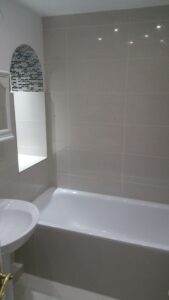
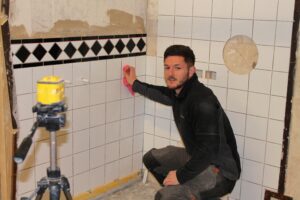
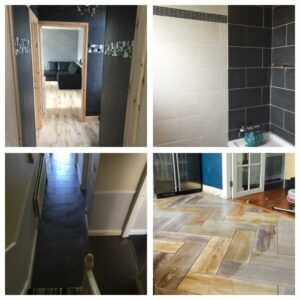
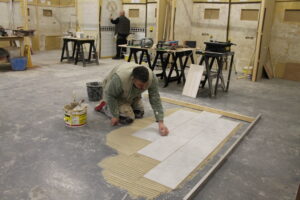 f 2nd and 3rd tile, move away diagonally and put a 2mm cross spacer flat in the joint and make sure it sits below the surface, then move the 4th tile back into position
f 2nd and 3rd tile, move away diagonally and put a 2mm cross spacer flat in the joint and make sure it sits below the surface, then move the 4th tile back into position

 fitted plus another 2 inches. For example, 6mm notch = 6-8 inch tile, 8mm notch = 8-10 inch tile, 10mm notch = 10 -12 inch tile, and so on. A 12mm notch would be used for any tile over 12 inches.
fitted plus another 2 inches. For example, 6mm notch = 6-8 inch tile, 8mm notch = 8-10 inch tile, 10mm notch = 10 -12 inch tile, and so on. A 12mm notch would be used for any tile over 12 inches.